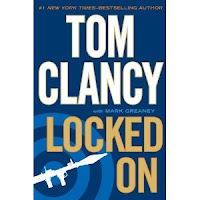The EMT was framed in a now-glassless window. The night was filled with sirens and flashing lights, and it was bitter cold. “Hang in there,” he told me. Even with all his gear on, his teeth were chattering. “We’ll get you out soon.” I looked back at him and — after several failed attempts at speaking — managed to say, "It's okay. I'm going to write about this. I'm a writer."
I was seventeen. I understood viscerally then what it took me years to understand intellectually: that writing is a way of detaching yourself from pain. If you are reporting on an experience, you’re outside it. I’m not sure if all writers find themselves dissociating in this way when facing trauma, but I know I’m not the only one. While Susan Sontag was dying miserably of cancer, her son, writer David Reiff, says he refused to take notes on the experience of watching her, of suffering with her. “I thought that to do so would be to seek and perhaps gain a measure of detachment I neither wanted nor felt entitled to,” he wrote in a 2008 article for the British newspaper The Observer. “And for a long time after my mother died, I believed that I would not write anything.”
In fact, to create art that moves
other people, you have to do nearly the opposite of detaching. You must
actively attempt to channel strong emotions, represent them in some way, and
pull your audience into the experience. If you’re not feeling it, your readers
won’t, either. It’s a writer’s paradox: you need deep empathy, so you can feel
what others are feeling and share it; but you also want detachment, so you can
observe accurately.
 A few years ago, I took a class in
mindfulness meditation, which culminated in a day-long retreat at a Zen center.
Nothing but silent meditation. All day. Our instructor taught us that to
survive this experience without running screaming from the room (which does
happen), we had to become expert observers. Whatever thoughts were in our
heads, whatever itches were in our bodies, we had to accept them. Not react to
them, not try to change them, but simply observe them. With six weeks of
preparation, I was able to build up enough meditation muscles to make it
through the retreat and even enjoy it. I was aware of my own discomfort,
ranging from muscular cramps to highly intrusive thoughts, but I could simply
watch these reactions. And they would pass.
A few years ago, I took a class in
mindfulness meditation, which culminated in a day-long retreat at a Zen center.
Nothing but silent meditation. All day. Our instructor taught us that to
survive this experience without running screaming from the room (which does
happen), we had to become expert observers. Whatever thoughts were in our
heads, whatever itches were in our bodies, we had to accept them. Not react to
them, not try to change them, but simply observe them. With six weeks of
preparation, I was able to build up enough meditation muscles to make it
through the retreat and even enjoy it. I was aware of my own discomfort,
ranging from muscular cramps to highly intrusive thoughts, but I could simply
watch these reactions. And they would pass.
From that class, I learned that
writing and meditation have something in common: they are both about observing.
Observation is the tool they use to bridge this paradox of extreme feeling and
extreme detachment. By going straight into the sensation and then watching it,
you are neither squelching it nor flooded by it.
Writing can be quite meditative for
me in this way, which isn’t to say that it’s soothing. Sometimes, it’s quite
the opposite. But it is about feeling and observing. Writing takes those two
essential bits of mindfulness and tacks on a third: sharing. Looking back, I
think one of the reasons I wanted to write about my car accident wasn’t just to
distance myself emotionally from the situation, but to share the impact with
others: to distribute the load. If someone read my story and had been through
something similar, she might think, “I reacted that way, too. It’s not just me.
I’m not alone.” And if someone read the story and hadn’t experienced anything
like it, well then, he’d be that much closer to understanding it. Finding or creating
bits of shared humanity, especially in distress, is immensely comforting.
So this is the ultimate challenge of the writer: to be inside something completely, yet able to see the whole thing in perspective, as if from a distance. To be the forest and the trees, at the same time.
p.s. Hat tip to Suze for her recommendation of the book "Nerve," which sparked this post.































_NRFPT_03.jpg)





